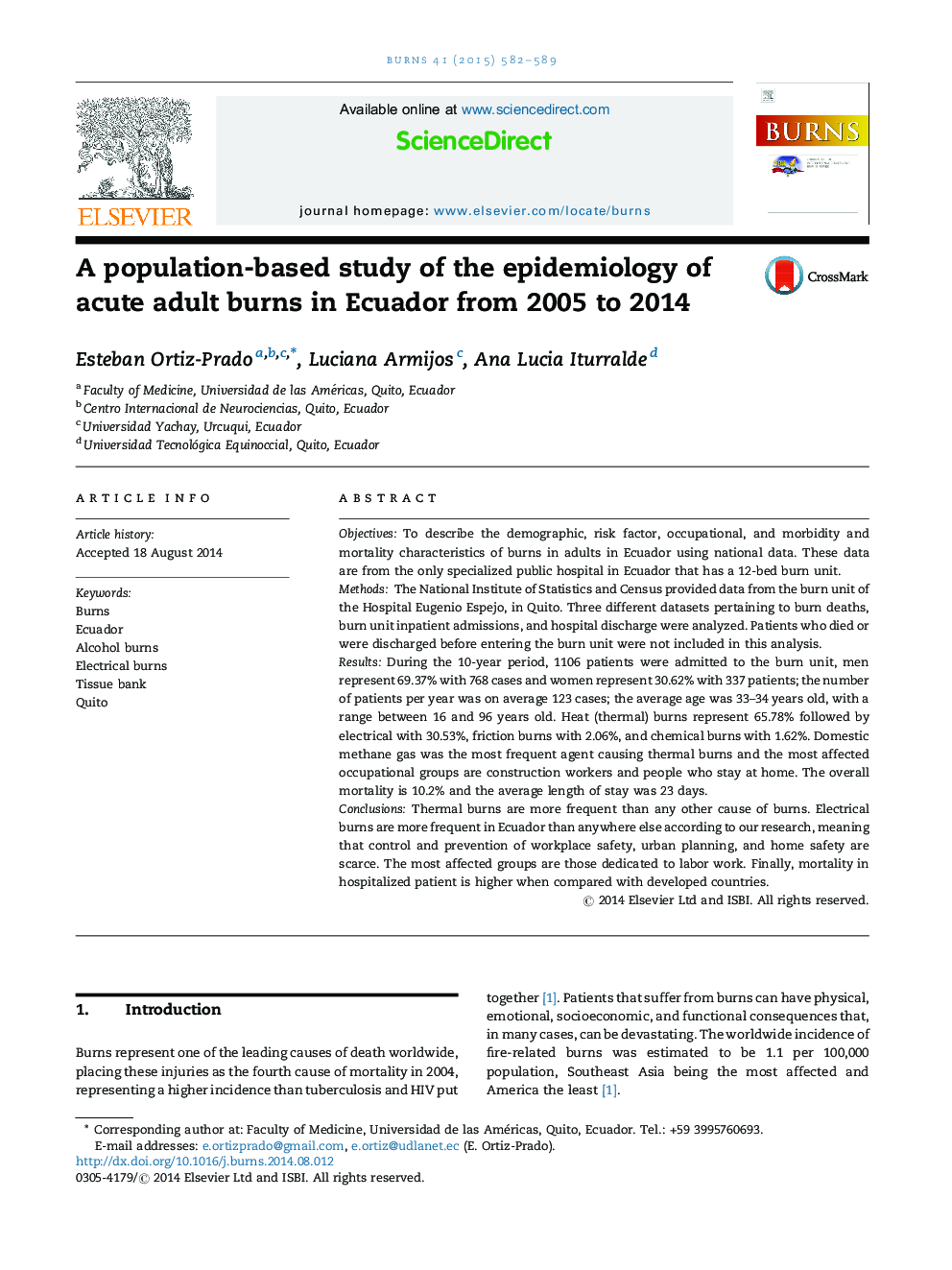| کد مقاله | کد نشریه | سال انتشار | مقاله انگلیسی | نسخه تمام متن |
|---|---|---|---|---|
| 3104336 | 1191649 | 2015 | 8 صفحه PDF | دانلود رایگان |
• It is the first population-based epidemiology report of burns in adults in Ecuador.
• Data came from the only specialized public hospital in Ecuador, receiving patients from many other provinces.
• There is no report published regarding burns and occupational activity, types of burns, or mortality in Ecuador.
• Data show that burn mortality is still high in developing countries.
• Safety training is an important issue in Ecuador.
ObjectivesTo describe the demographic, risk factor, occupational, and morbidity and mortality characteristics of burns in adults in Ecuador using national data. These data are from the only specialized public hospital in Ecuador that has a 12-bed burn unit.MethodsThe National Institute of Statistics and Census provided data from the burn unit of the Hospital Eugenio Espejo, in Quito. Three different datasets pertaining to burn deaths, burn unit inpatient admissions, and hospital discharge were analyzed. Patients who died or were discharged before entering the burn unit were not included in this analysis.ResultsDuring the 10-year period, 1106 patients were admitted to the burn unit, men represent 69.37% with 768 cases and women represent 30.62% with 337 patients; the number of patients per year was on average 123 cases; the average age was 33–34 years old, with a range between 16 and 96 years old. Heat (thermal) burns represent 65.78% followed by electrical with 30.53%, friction burns with 2.06%, and chemical burns with 1.62%. Domestic methane gas was the most frequent agent causing thermal burns and the most affected occupational groups are construction workers and people who stay at home. The overall mortality is 10.2% and the average length of stay was 23 days.ConclusionsThermal burns are more frequent than any other cause of burns. Electrical burns are more frequent in Ecuador than anywhere else according to our research, meaning that control and prevention of workplace safety, urban planning, and home safety are scarce. The most affected groups are those dedicated to labor work. Finally, mortality in hospitalized patient is higher when compared with developed countries.
Figure optionsDownload high-quality image (117 K)Download as PowerPoint slide
Journal: Burns - Volume 41, Issue 3, May 2015, Pages 582–589
